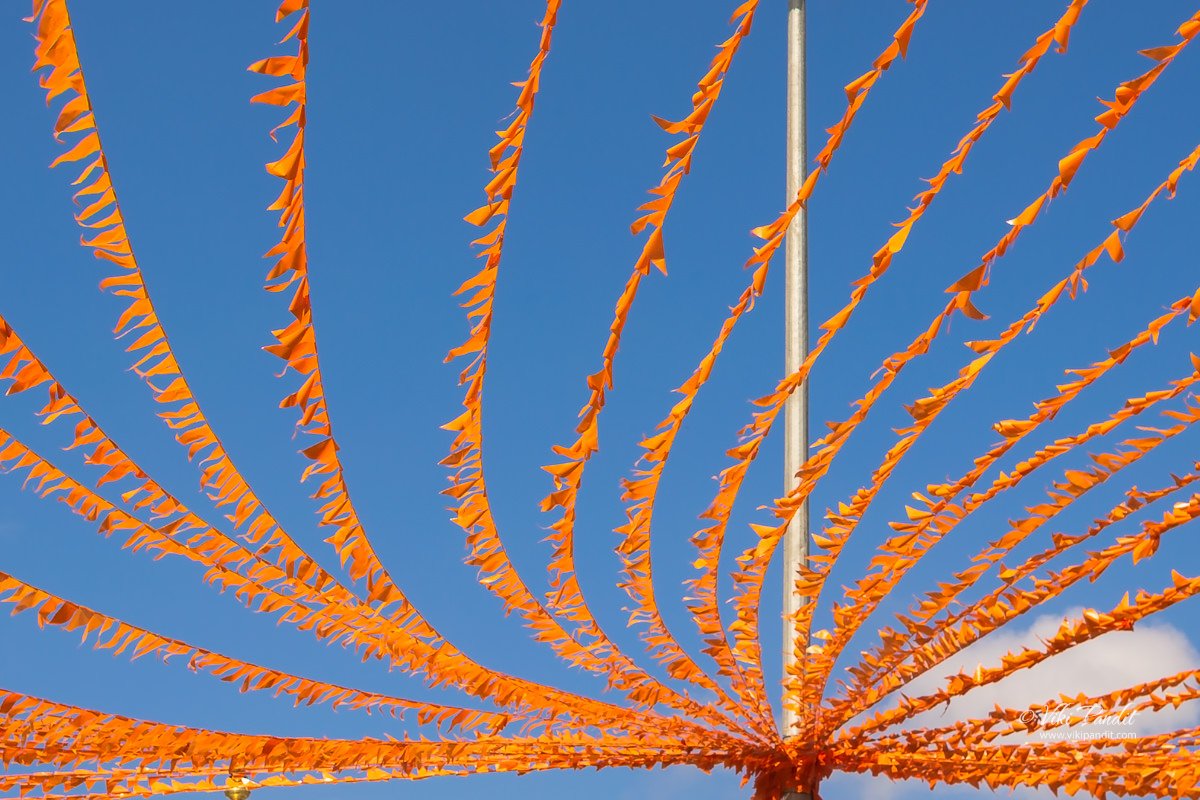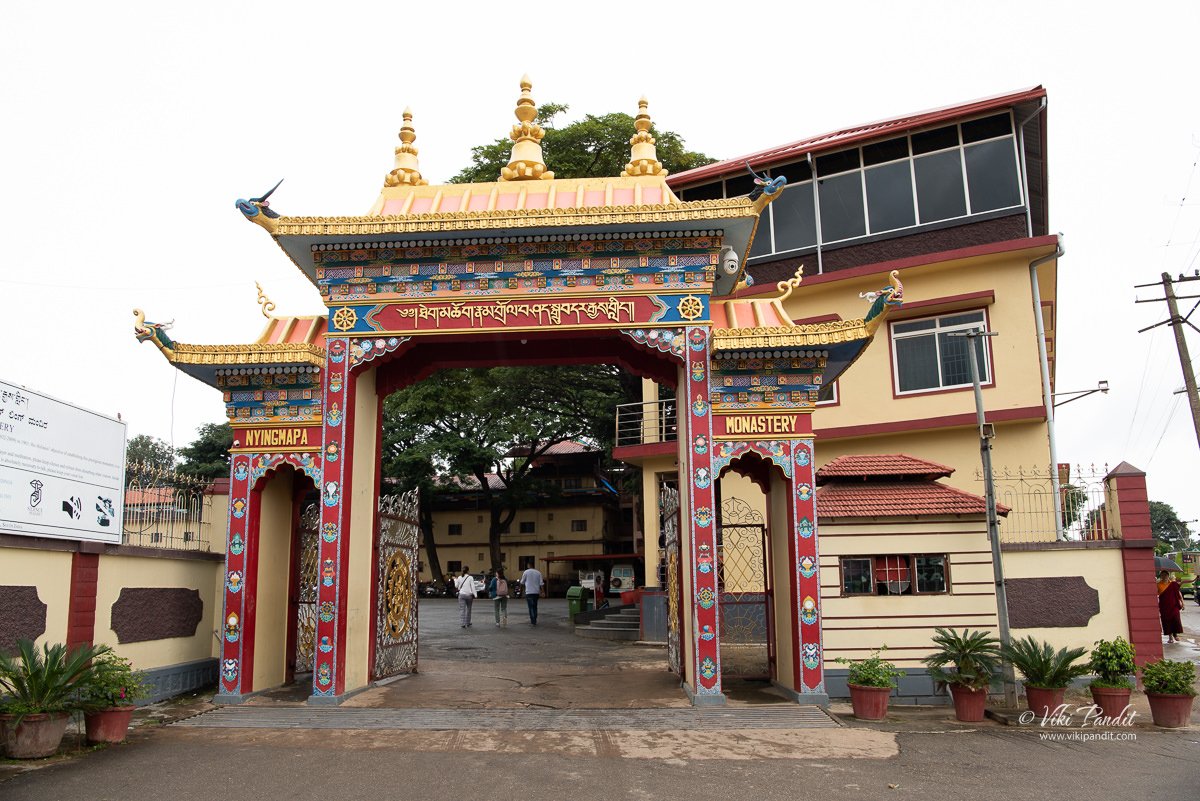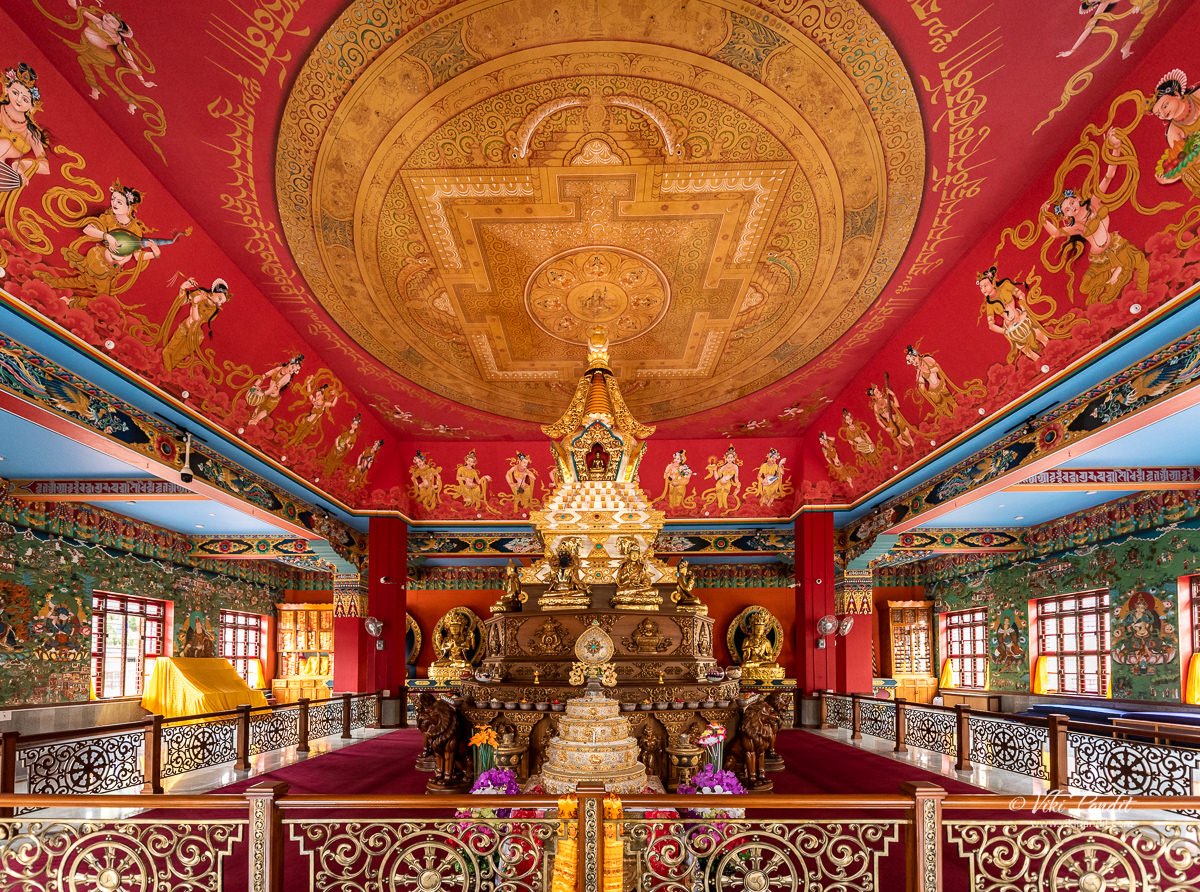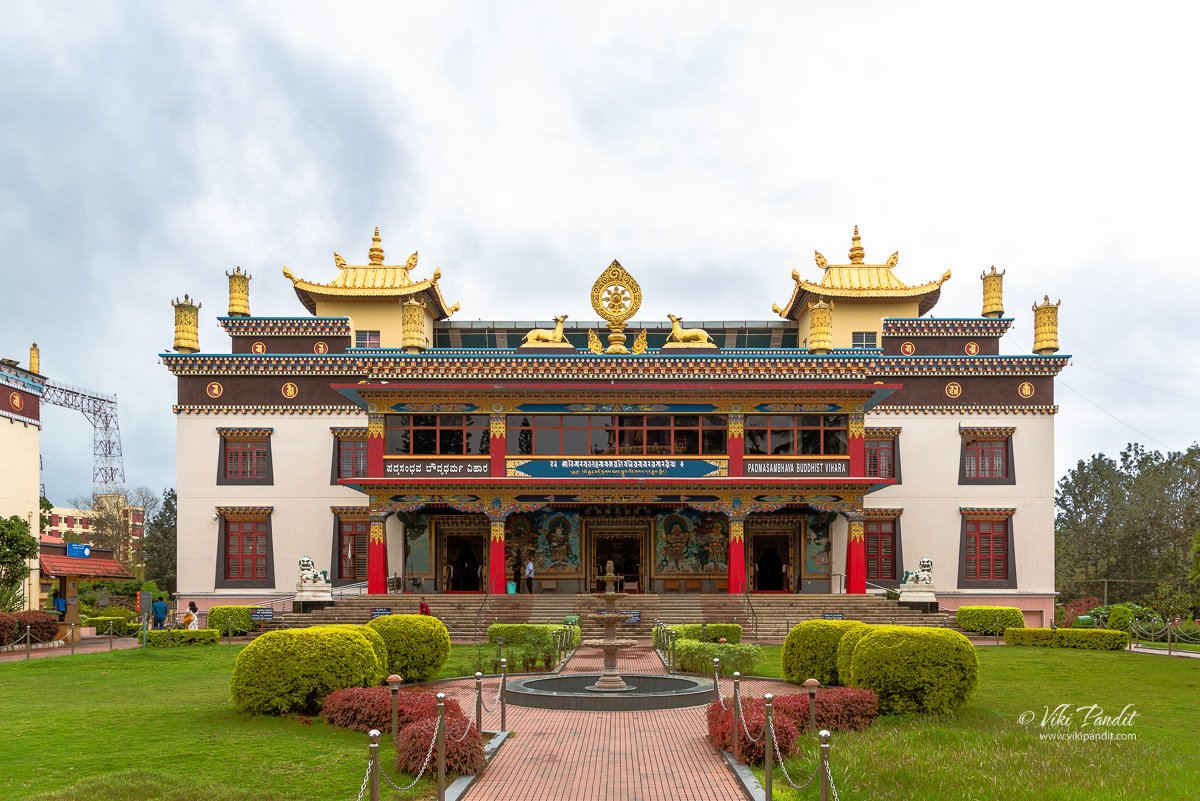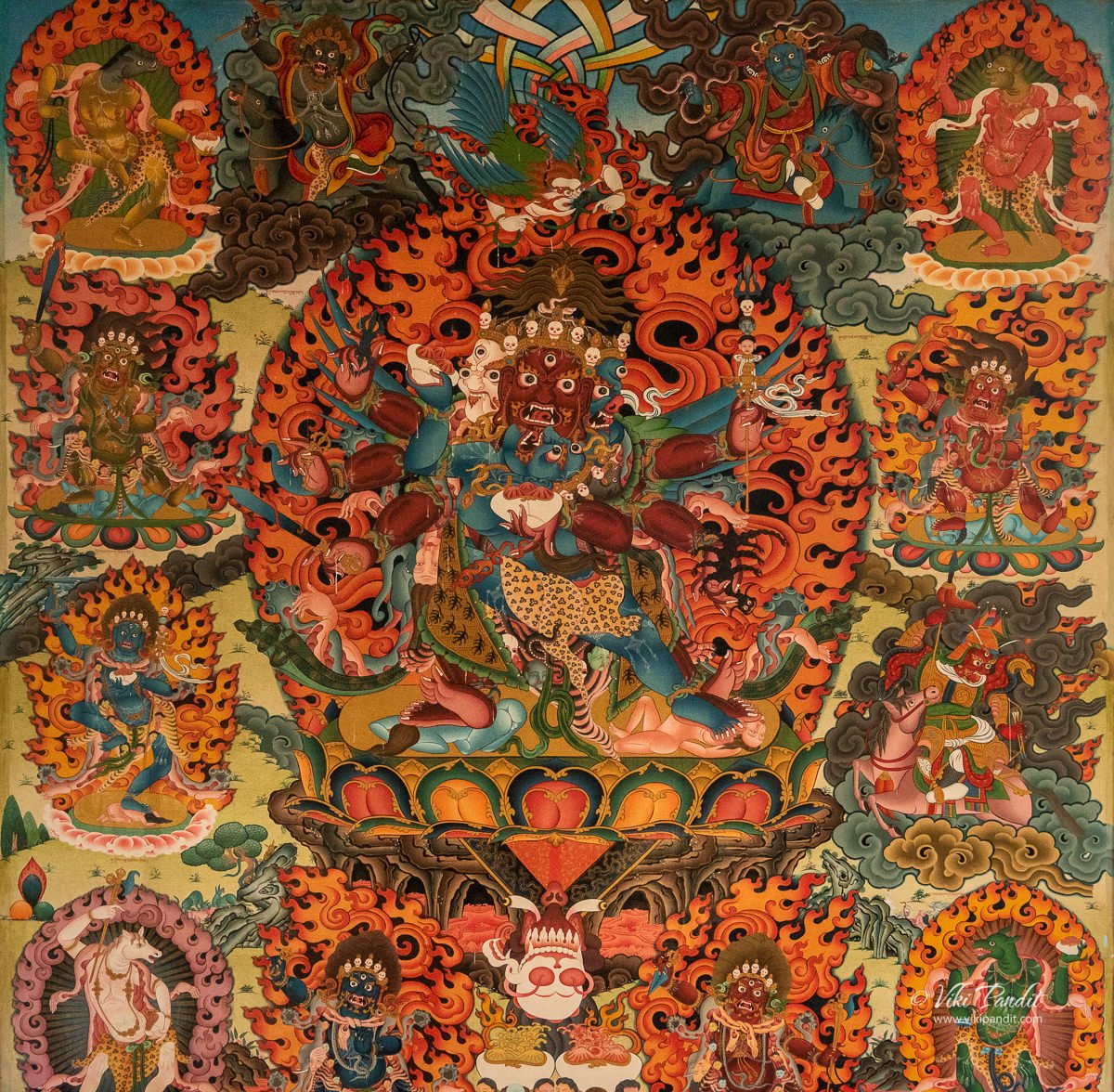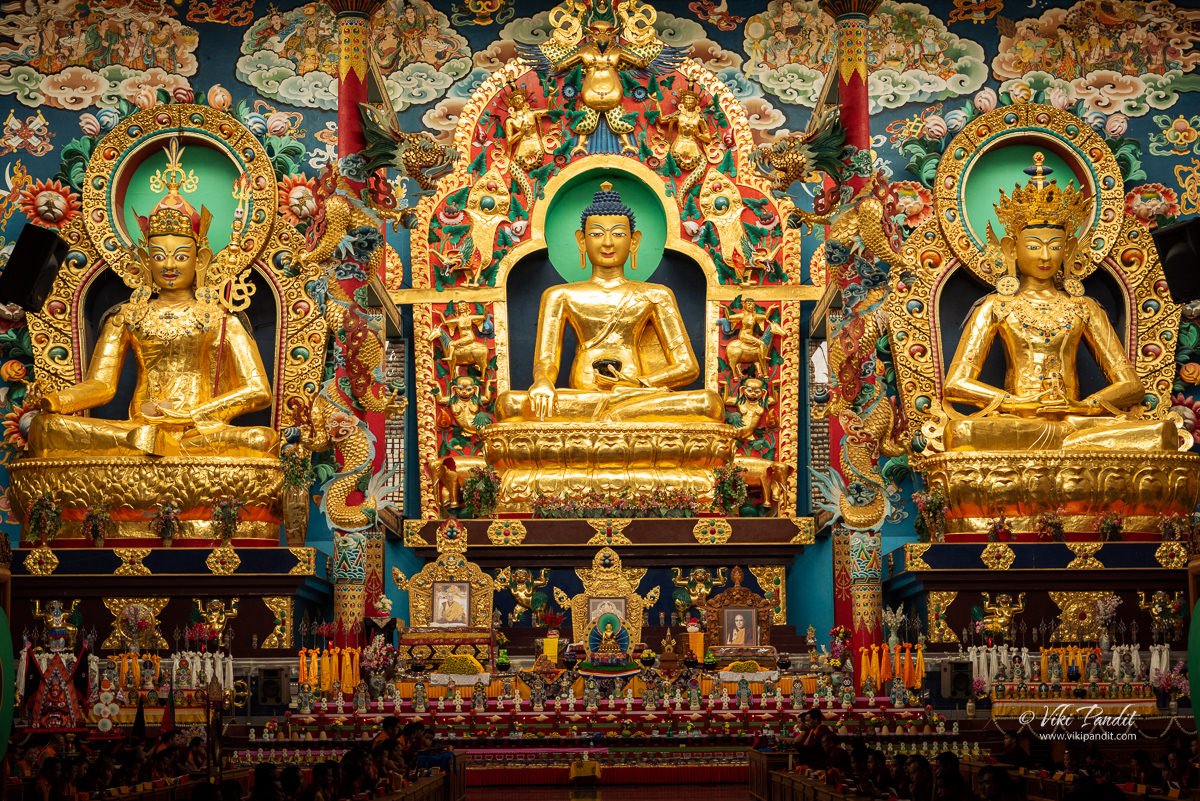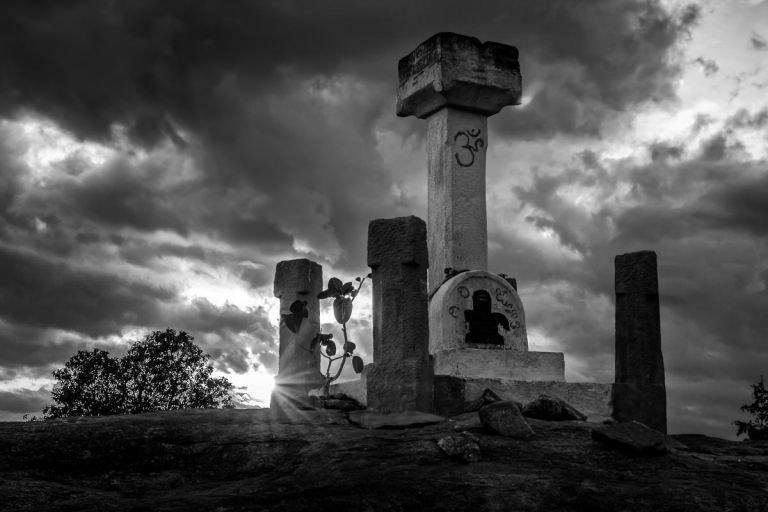Today we are going to explore Bylakuppe, a peaceful Tibetan refugee settlement near the town of Kushalnagar in Coorg.
Namdroling Monastery in Bylakuppe used to crop up regularly in my searches for interesting places to visit in Karnataka. Desperate to recover from the fatigue caused by urban living, I sought out this Buddhist monastery, to spend some time in peace.
Bangalore to Kushalnagar
Mani and I were on our first exploration trip in the southern part of India. The ride from Bangalore to Kushalnagar was just around 5-6 hours. We booked a rental car along with a chauffeur for the full trip. We had reserved “The Casiita”, a cottage-type resort in the quaint town of Kushalnagar. Having a car at our beck & call turned out to be very helpful, as we had to head out into the town every night because our lodgings didn’t serve any food apart from tea and biscuits.
Kushalanagar is the second largest town in Kodagu district, bordering Coorg. According to a popular myth, the name was given by Hyder Ali who was camped there when he received news of the birth of his son Tipu and named it Kushyal nagar (town of gladness).
One of the earlier mentions of Kushalnagar can be found in Tipu Sultan’s courtier-cum-biographer Mir Hussein Kirmani’s writings in the History of Tipu Sultan: Being a Continuation of The Neshani Hyduri.
Unfortunately, the town residents were not so “glad” when in 1788, Tipu marched into Kodagu and scorched entire towns and villages in Kushalapura (today’s Kushalnagar), Talakaveri and Madikeri.
Namdroling Nyingmapa Monastery
The next day, we started from our resort at around 9 a.m. The sun was bright and the skies were blue. The town center was some 10 mins drive away. Once we were in town, we could find quite a few eateries. After a light breakfast of bread & eggs, we started for Bylakuppe which is about 6 km from Kushalnagar.
It takes about 30 minutes from the town center to reach the Tibetan settlement off the Mysore-Madikeri Road. We passed quite a few large tracts of empty fields along the way. The roads were decorated on both sides with colorful paper hung on a string, dancing crazily in the wind.
As we approached the monastery, the surroundings began to change towards vast stretches of flat fields interspersed with tri-lingual banners honoring the Dalai Lama in English, Tibetan, and Kannada. A few minutes into the drive we passed through what appeared to be a marketplace with many Tibetan restaurants. The area was teeming with shaven monks in their flowing dark red robes. The only signs that we were not in Lhasa but in a village in south India were the Kannadiga-speaking street hawkers.
Once we reached the Namdroling Monastery, the driver dropped us off and parked the car just opposite the main gate in a parking area for tourists. Near the monastery is a small bazaar known as “Camp 4 Shopping Center.” You can find several shops selling Tibetan souvenirs. We decided to check it out later on our way back and headed towards the entrance gate.
Beyond the gate is a huge open space, the size of a football field. As we walked towards the main entrance of the monastery, a couple of shops inside the premises were selling souvenirs and snacks as well. During festivals, this main courtyard becomes an open stage where masked dancers swirl in colorful costumes to the sound of gongs and massive ceremonial trumpets. After crossing the courtyard, we went past a small corridor that led to the main temple. There was so much silence, I was feeling guilty to even speak.
A brief history of Namdroling Monastery
To visit such an amazing place and not know the history makes me feel empty inside. So, before coming, I had breezed through some pages on the internet about this place. In the 1960s, the Tibetans facing Chinese invasion were fleeing Tibet in droves and found refuge in a number of settlements in India. During the same period, a monk named Penor Rinpoche, who was the 11th throne holder of the Palyul lineage of Tibet led his followers to Bylakuppe, a small village in Karnataka.
In 1963, he established Namdroling Monastery in the village with an aim to help the relocated monks live a peaceful life and continue their spiritual pursuits. Initially spread over an area of 80 sq. feet, a temple was constructed of bamboo from the forest donated by the Indian Government to the Tibetan exiles. The original name given to the monastery was Thegchog Namdrol Shedrub Dargyeling.
Though Bylakuppe is still referred to as a refugee settlement, it has grown into a full-fledged town. It is the second-largest Tibetan settlement outside Tibet, the first being Dharamsala. The village consists of two Tibetan refugee settlements, namely Lugsum Samdupling which was established in 1961 and Dickyi Larsoe which was set up in 1969. In 1999, a massive monastic temple, the Padmasambhava Buddhist Vihara, commonly called the golden temple, was built here. The Dalai Lama inaugurated the monastic temple which has grown into a much sought-after tourist destination.
Unfortunately, even after six decades, because of no support from the UN, the Tibetans have not been able to return back to their homeland. Now with a growing number of schools and monasteries, Bylakuppe appears more like a center for Tibetan Buddhism rather than the refugee settlement it started out as.
Today the monastery is home to nearly 5000 monks and nuns, renowned as a center for the pure upholding of the teachings of the Buddha and popularly known as Namdroling Monastery.
Zangdog Palri Temple
The first building inside the compound, right next to the entrance is the Zangdog Palri Temple. A massive photo of Guru Rinpoche is displayed on the facade of the temple.
The Zangdog Palri Temple hosts five gold-plated statues including Buddha, Padmasambhava, and Amitayu.
It’s difficult to capture them together because of the huge stupa in the middle of the room. The hall is heavily decorated with a mesmerizing mandala adorning the ceiling in the center of the room.
The sides of the ceiling taper down to form an inner rectangle also decorated with various deities, some in dancing poses and others playing traditional Hindu instruments. Usually, devotees seek blessings by lighting the incense sticks after which they sit on the carpet to imbibe the piousness and spirituality radiating at this place.
Padmasambhava Buddhist Vihara / Golden Temple
After spending some quiet time in front of the Buddha, we moved on towards the Golden Temple past the calm landscaped gardens. The architecture of the temple is in Tibetan style – with vibrant colors, artistic designs, sculptures, and paintings. The golden-colored deer and the wheel symbol of Buddhism crown the shrine. Wide steps lead into the temple with two life-size lion replicas on either side.
Before you step inside the hall, you are welcomed by this red door with an intricately crafted door handle. The Tibetan doors are no less than an astounding piece of art. Brass ornamentation, exquisite colors, holy symbols and decorative paintings are Tibetan traits of door decorations.
Inside there are three enormous gold-plated statues of Buddha Shakyamuni (60 feet), Guru Padmasambhava (58 feet), and Buddha Amitayus (58 feet) set against intricate murals. The idol in the middle is of Sakyamuni Buddha or Gautama Buddha flanked by those of Guru Padmasambhava to his right and Amitayus to the left. They are made out of copper gilded with gold. The inside of the statues contain scriptures, relics of the masters, small statues, and clay stupas.
Once inside the temple, you are almost immediately drawn to the three imposing gold-plated statues. The center statue is Buddha Sakyamuni, the founder of Buddhism, who was born to King Shudodhana and Queen Mayadevi at Lumbini (currently in Nepal), about 2500 years ago. The altar is decorated with flowers, candles, and incense.
For those who don’t know: At the young age of 29, leaving the luxuries of the palace, Prince Siddhartha set out to search for an everlasting solution to end the cycle of birth and death that has tormented all beings from time immemorial. After many years of serious practice, he attained enlightenment under the Bodhi Tree in Bodh Gaya and became a Buddha.
The statue to the left of Buddha Sakyamuni is Guru Padmasambhava, also known as Guru Rinpoche. As prophesied by Lord Buddha, Guru Rinpoche was born twelve years after the passing of Lord Buddha, on Lake Sindhu, in the land of Oddiyana (present-day Afghan-Pakistan border). He is considered to be the heart emanation of Buddha Amitabha.
The statue to the right of Buddha Sakyamuni is Buddha Amitayus, the Buddha of Long Life. Buddha Amitayus achieved Buddhahood countless eons ago, but his activity still remains connected with extending the lifespan of beings.
The prayer hall inside can house a few hundred monks at a time. The spacious prayer hall has seating arrangements in rows – for the monks – with prayer boxes and related artifacts. As we entered the hall, prayer was currently in session. The chanting of the mantras accompanied by the sound of drums and cymbals resonate with the place, creating a divine atmosphere.
Once you are inside the temple, please try to keep silent as it is one of the requisites inside the holy complex.
Tibetan Buddhist monks normally wear red costumes. The color red is auspicious in Tibetan culture. It is a sacred color, one of the colors of the five Buddhas and the color of the monk’s garments. It is believed to have protective qualities and is therefore often used to paint sacred buildings. The only color that supersedes red in Tibetan culture is the yellow color.
There is an ancient story that tells how yellow became the sacred color of Buddhism. When Gautam Buddha, the founder of Buddhism, left the throne to live a simple and thrifty life, he wore the white cloth that was used to wrap dead bodies. The cloth was tanned by the sun and moistened by the rain, and it gradually became wheat-colored.
According to historic documents, even a patch of yellow on the clothes of an average person caused people to salute him. It tells us that yellow was an exclusive color for monks.
Yellow was slowly replaced by red because Tibetan ethnicities increased their exchanges with Han ethnicities. To differentiate from the yellow that the royal family used, they changed into dark colors. Dark red is a mixture of red and black.
Today, Tibetan Buddhist monks normally wear red costumes. Yellow ones are seldom worn.
This is one of the rare monasteries where photography is allowed even inside the temple.
The walls of the Golden Temple are adorned with colorful paintings depicting gods and demons from Tibetan Buddhist mythology. One mandala that caught my attention was that of the Mahākāla. Mahākāla is the enraged form of the gentle and empathetic Avalokiteshvara Bodhisattva. In Tibetan iconography, Mahākāla is usually black although he appears in other colors in different paintings like the one below.
Here the Mahākāla is depicted in brown-reddish color. He has six arms and three bulging eyes with flames for eyebrows. He is adorned with a crown of five skulls, representing the transmutation of the five vices (pride, anger, ignorance, jealousy and attachment) to virtues.
In Mahākāla’s arms is Ekajati, also known as “Blue Tara.” In the mandala, Ekajati’s single eye gazes into unceasing space with a single breast that “nurtures practitioners as [her] children.” She is naked, like awareness itself, except for a garment of tiger skin around her waist. She is ornamented with snakes and a garland of human heads. Her body is deep blue in color. She stands on a single leg. With that foot, she steps upon a corpse.
According to Hinduism, Mahākāla is the ultimate form of Shiva, the destroyer of all elements. There is nothing beyond him, no element, no dimensions, and not even time. That is why he is maha (greater) kaal (time). In front of him is his consort is symbolized as Kali. Both Mahākāla and Kali represent ultimate destructive power, not bounded by any rules or regulations. They have the power to dissolve even time and space into themselves and exist as Void at the dissolution of the universe.
The two deities are surrounded by many kings with similar angry faces. The wrathful appearances of these kings are attributed to their ability to ward off all evils around and protect us.
We sat there for a long time as the hymns dissolved into a calming and blissful silence. This kind of place gives me a sense of isolation from the noise of the outside world. I am not religious. I was raised as a humble human being and my parents never asserted any kind of religious beliefs on me. But at some point in time, the temples’ serenity quietly slipped into my soul.
For people who are interested in learning more about the religion, the monastery is not just a temple complex. It also offers a structured course in Buddhist teachings at The Ngagyur Nyingma Institute. Tibetan history & Buddhism, ritual dance, music, mandala construction, and chanting are some of the subjects covered. The higher course focuses on sutra & tantra teachings of Buddha with debates and discussions on commentaries by scholars.
In my childhood, I was very much an admirer of Buddhism and on certain days did go through an urge to indulge in its teachings.
Before exiting the monastery, we lumbered around the souvenir shops. Tibetans have a penchant for colorful handicrafts like handwoven sweaters, shawls, and carpets. Giveaways like prayer wheels, caps, handbags, and umbrellas can be bought at a store located on the premises. Around it, you will find various stores selling traditional Tibetan jewelry and other artifacts. I purchased a small bell to tie around the door to the house.
Apart from these two attractive temples, the Monastery also has many other smaller temples like the Vajra Kilaya Temple and the Tara Temple. At the northern periphery is a series of 16 stupas exhibiting relics and scriptures of Buddhist teachings. Apart from the religious structures the market area also has a wonderful cafe. You can try their Tea with Yak milk. Although I should alert you it tastes a bit salty.
Potala Restaurant
While coming back, we decided to try one of the local Tibetan restaurants. There were a few, and all were very busy. We finally decided on the Potala Restaurant. It is a trendy restaurant on the first floor in the center of the marketplace. All individual tables were taken so we sat down at a large shared table with other guests. It took some time coming but soon we had our dumplings and some Tingmos (steamed bread in Tibetan cuisine) delivered to us famished souls.
You can shop for Tibetan and Chinese handicrafts, and decorative and religious items. The tiny Tibetan colony here is an ideal escape from the hustle and bustle of city life. The enclosed calm and the spiritual ambiance of the place welcomes all the visitors. Along with Golden Temple/Monastery, there are many other sightseeing places near Madikeri, making it an ideal weekend getaway from Bangalore.
The best time to visit the temple is during the festive season. Various masked dances in their colorful attires can be seen performing their traditional dances in the main courtyard during the festival. During this time, the main courtyard turns into an open stage for masked dancers and performers to present live performances amid enthralling traditional music. The Tibetan New year (Losar) which usually occurs in the month of February or March is also a great time to plan your visit.
Please leave a comment if you liked my story or follow our journey as we head out to see the birthplace of the mythical river Kaveri.
The Golden Temple is open for visitors from 7 am till 7 pm daily.
Inside the temple, please refrain from running and shouting. Please do not touch the statues and paintings. As the temple is a place of prayer and meditation, please keep silent and refrain from disturbing other visitors.
The actual name of the temple is Padmasambhava Buddhist Vihara, but local people and newspapers tend to refer to it as the Golden Temple.
The construction of the Golden Temple began in 1995 and it was completed in 1999.
Disclaimer: The information presented in this article is based on the time I visited the premises. Note that there might be changes in the prices of merchandise and admission fees that might have occurred after this article was published. At times the facility might also be closed for repairs or for variety of other reasons. Kindly contact the facility or facilities mentioned in this article directly before visiting.
Usage of this site indicates acceptance of my Terms and Conditions.
Credits: The historical information presented herein is gathered mostly from local guides that were re-inforced via historical writings.
